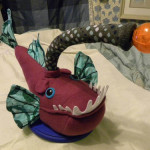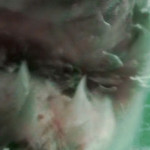 Sea turtle biologists in the Gulf of California in northwest Mexico are having continued success with efforts to monitor and restore sea turtle populations in the region, according to DSN’s field correspondent Wallace J Nichols. Three critically endangered hawksbill turtles Eretmochelys imbricata were tagged with satellite transmitters for the first time ever in this part of the world.
Sea turtle biologists in the Gulf of California in northwest Mexico are having continued success with efforts to monitor and restore sea turtle populations in the region, according to DSN’s field correspondent Wallace J Nichols. Three critically endangered hawksbill turtles Eretmochelys imbricata were tagged with satellite transmitters for the first time ever in this part of the world.
The satellite tags will provide new and valuable information about sea turtle movements and habitat use. The information should aid in their management and protection. J’s blog carries the full press release with all the details.
The hawksbill turtle was once heavily exploited for its beautiful shell, called bekko in Japanese, but has since been listed in the Convention for International Trade in Endangered Species (CITES). The legal hawksbill shell trade ended when Japan agreed to stop importing shell in 1993, but a significant illegal trade continues. Cuba petitioned to downgrade the threatened status of the turtle in 1997, but this was defeated by vote at 10th Conference of the Parties. Scientists are hopeful that the species will recover.
“Many people said it was too late for the Eastern Pacific hawksbill” states Nichols, “but they said the same thing about green turtles when we began studying them in the same area 15 years ago and the species has since made a strong comeback. Our goal is not to study sea turtle extinction, we plan to bring them back from the brink.”
Video of a satellite tagged sea turtle’s release is posted below the fold.
Proyecto ¡CAREY! is a collaboration between San Diego-based Pro Peninsula and Mexico’s Grupo Tortuguero, with support from Ocean Conservancy, National Marine Fisheries Service, People’s Trust for Endangered Species, Oceana, Conservation International and the National Fish and Wildlife Foundation.






Thanks for posting this. I want to mention that the Baja field work is being conducted by our colleagues Alex Gaos and Ingrid Yanez. We’ll also put some transmitters out on nesting hawksbills in El Salvador later in July, in collaboration with FUNZEL (Fundacion Zoologica de El Salvador). I’ll post a link to the tracking site so folks can follow the turtles if they wish.